Welcome to Bambarone La Masseria – a historical jewel in the heart of Puglia!
As a tourist explorer, you may find it as interesting as we do to learn about the background and history of the Masseria and the land. Looking at it from the outside, you will be amazed and your eyes will sparkle at these relics of thousands of years of history – for you and for us, this is not your normal, familiar environment. My husband and I come from Germany and unfortunately not so many relics of the past have been preserved there. We were all the more interested in the past in order to revive an authentic masseria with the right level of luxury for our guests. We invite you to immerse yourself in the history of this region of southern Italy, so that you can enjoy your holiday with even deeper impressions!
The origins of Bambarone La Masseria
The origins of Bambarone La Masseria are rather obscure. It is certain that it was built piece by piece over several centuries; the small chapel is probably the oldest part of the main building. The few remains of frescoes and inscriptions could date back to the 12th or 13th century, but more research is needed. In any case, it is easy to see from the structure that this chapel and the south-western part of the building were probably built first. The ‘tower’ visible at the back of the chapel could be a former apse, and the balcony above was definitely added later. The rooms immediately above the chapel also appear to be the oldest on the upper floor, with pointed arches that are distinctly different in their medieval appearance from the adjacent rooms. However, the whole extension, with the arcades in front and the external staircase, was definitely added later.
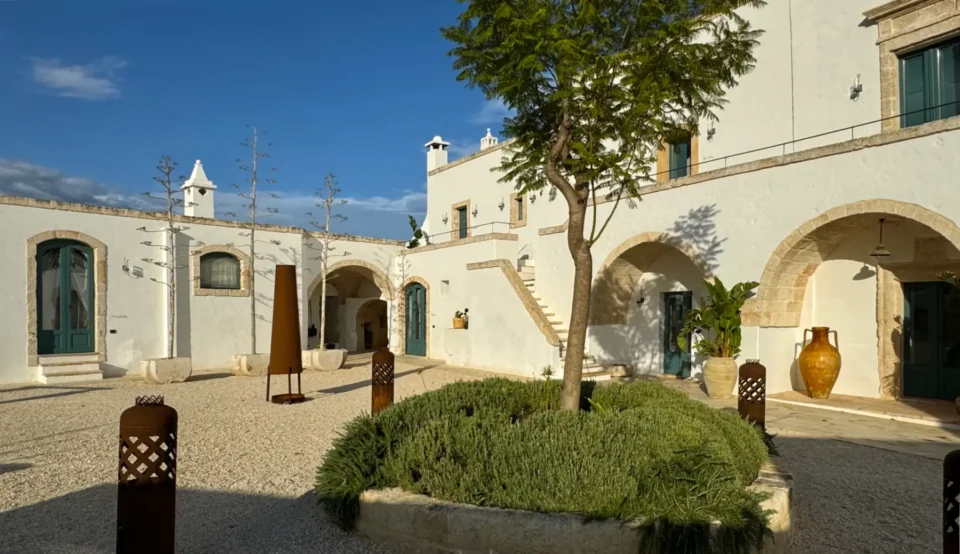
Foto: Stefan Schneider
The historic oil mill – a testimony of Puglian tradition
The oil mill is an essential and typical part of a masseria. The underground mill (frantoio), located under an outbuilding, has been in use for countless centuries. It is still possible to see that the oldest stables, with their feeding troughs dug out of the rock, were built in natural caves. Since ancient times, caves have been used to store and process olive oil to prevent it from being spoilt by light and heat. There is no date for this, but it is reasonable to assume that the natural caves, together with the probably very fertile soil in the former river courses, made the site attractive for the construction of a country estate. It is also possible that monks built a place of worship on the site, with some agriculture to support themselves. This was not uncommon in the area, especially after the abandonment of the so-called cave villages, such as nearby Lama d’Antico, between the 14th and 16th centuries, a place where many monks, hermits and pilgrims had settled. https://www.brundarte.it/lama-dantico-fasano-br/
Knight’s estate, monk’s farm or farmhouse? – Previous owners of the Masseria
It was not until 1826 that cadastral documents were found in which a Bianchi family was listed as the owner of the estate, and they continued to own it until 1956. This could be an indication that the farm was once run by the church. As a result of the Napoleonic conquests and the royal decrees that accompanied them, from 1809 onwards church properties in Italy were expropriated and gradually auctioned off to finance the public purse. It was also during this period that the first systematic cadastral records were made, to serve as a basis for tax collection. The nearby town of Fasano was also the headquarters of the Order of Malta, and many knights had been rewarded with land and built their estates there since the Middle Ages. We can only speculate about the history of the earlier centuries, whether it was a former knight’s estate, a monk’s manor or a private farm. What is certain is that Bambarone La Masseria has been inhabited for at least 700 years.
A life in the masseria
The Masseria remained a typical Puglian farm until 2021, the year we started our project. Centuries-old olive trees, some up to 1000 years old, surrounded the farmhouse and were the main source of income. An oil mill, a well and several cisterns to collect rainwater, a bread oven, a walled citrus orchard, an orchard, livestock and, last but not least, the chapel made the masseria practically self-sufficient and viable. The word masseria derives from the Latin massa = estate and is a typical term in Apulia for autonomous and usually heavily fortified estates outside towns.
FAQ
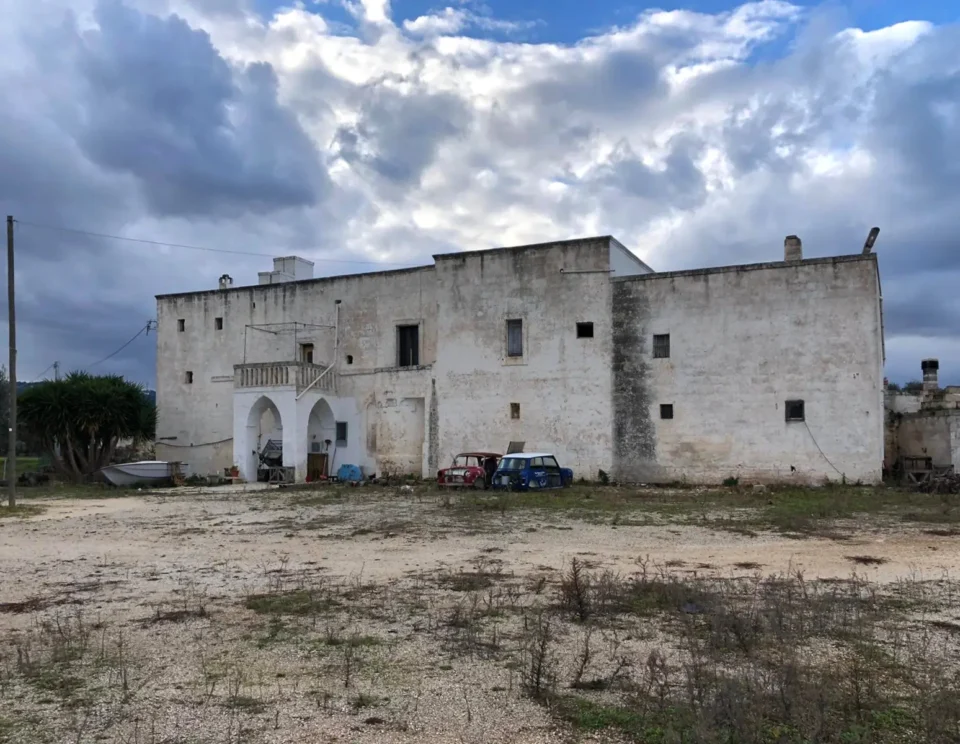
Photo: Stefan Schneider
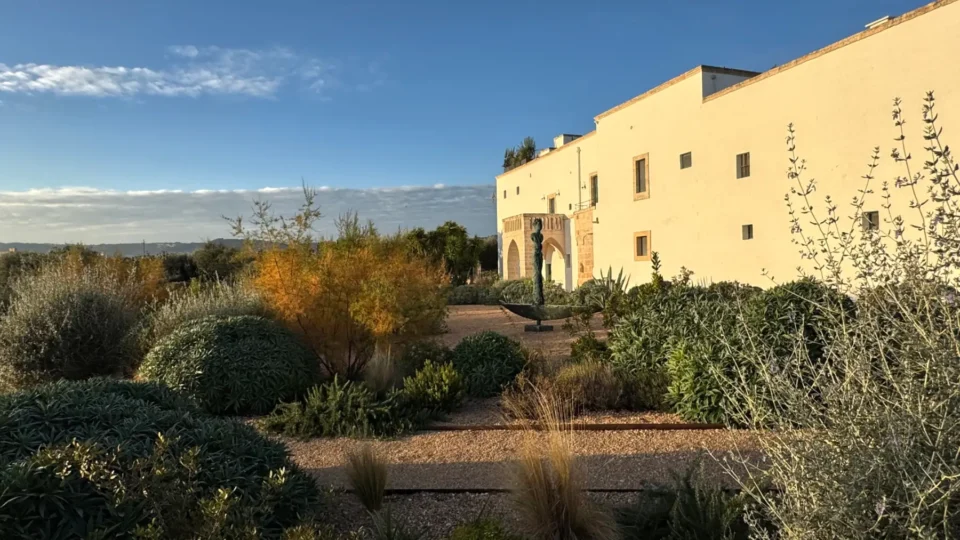
Photo: Stefan Schneider
The stables and storage rooms were on the ground floor, while the much drier and brighter rooms on the upper floor were occupied by the owner’s or tenant’s family and the workers. Until well into the 20th century, cooking was done on open fires, which also heated the living rooms. Water was brought up from cisterns on the ground floor by buckets in brick shafts. Toilets were outside the buildings and people washed themselves with a washbowl and a jug.
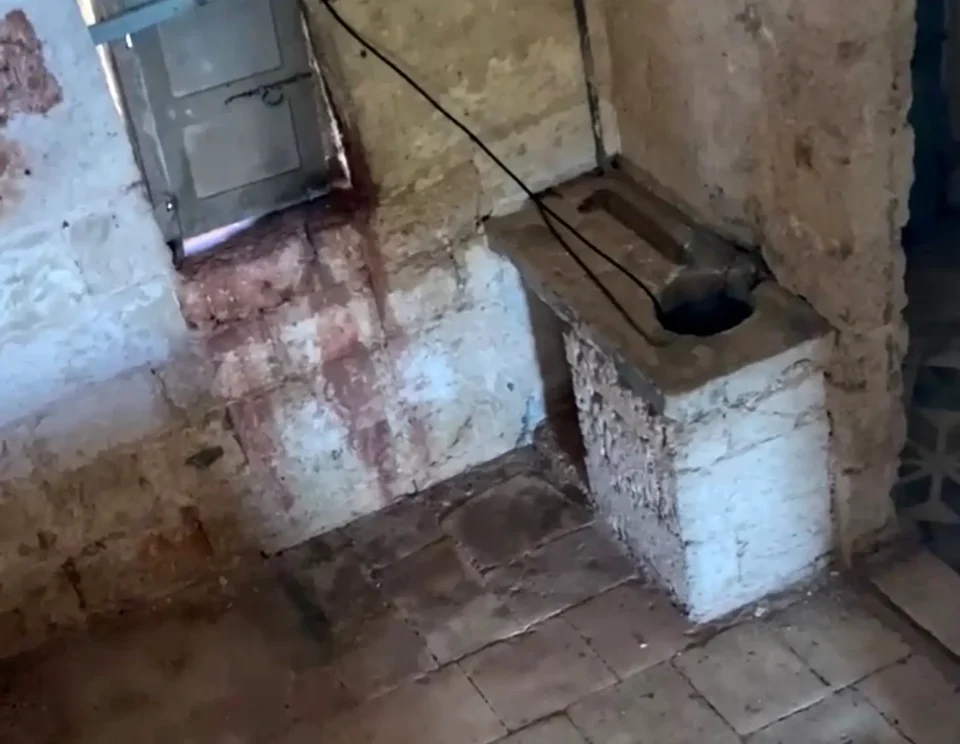
Photo: Stefan Schneider
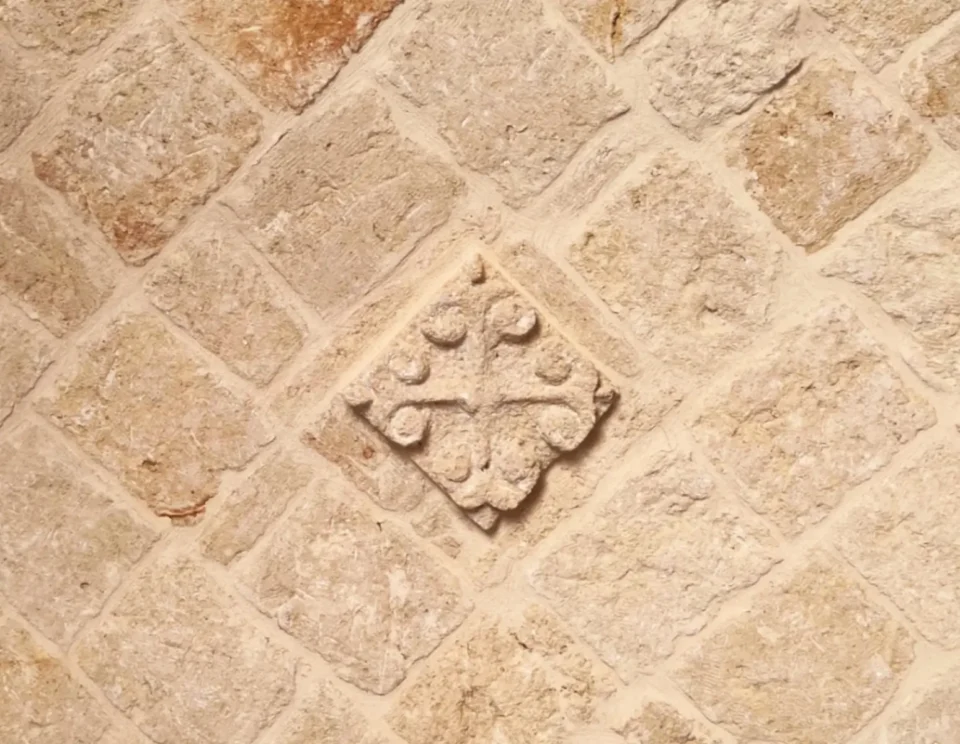
Photo: Stefan Schneider
A masseria was often fortified like a castle to defend itself against the frequent raids in the area. The valuable livestock was usually kept in a walled courtyard and embrasures or, even earlier, spouts for hot oil above the main entrances were obviously necessary and common defensive devices. Some masserie also had a defence tower, especially near the coast, so that approaching threats from the sea could be seen in time. https://www.terredifasano.it/lasciati-ispirare/le-masserie-di-fasano/
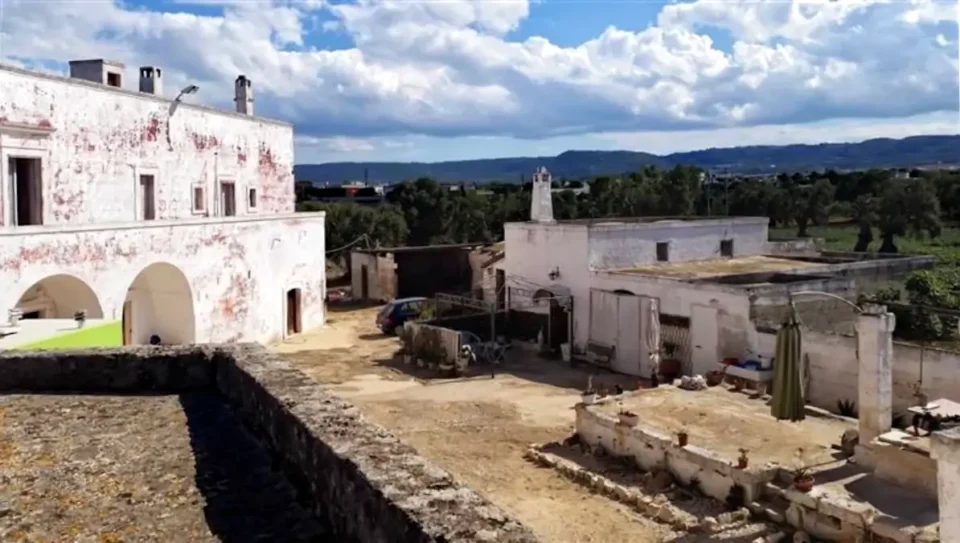
Photo: Stefan Schneider
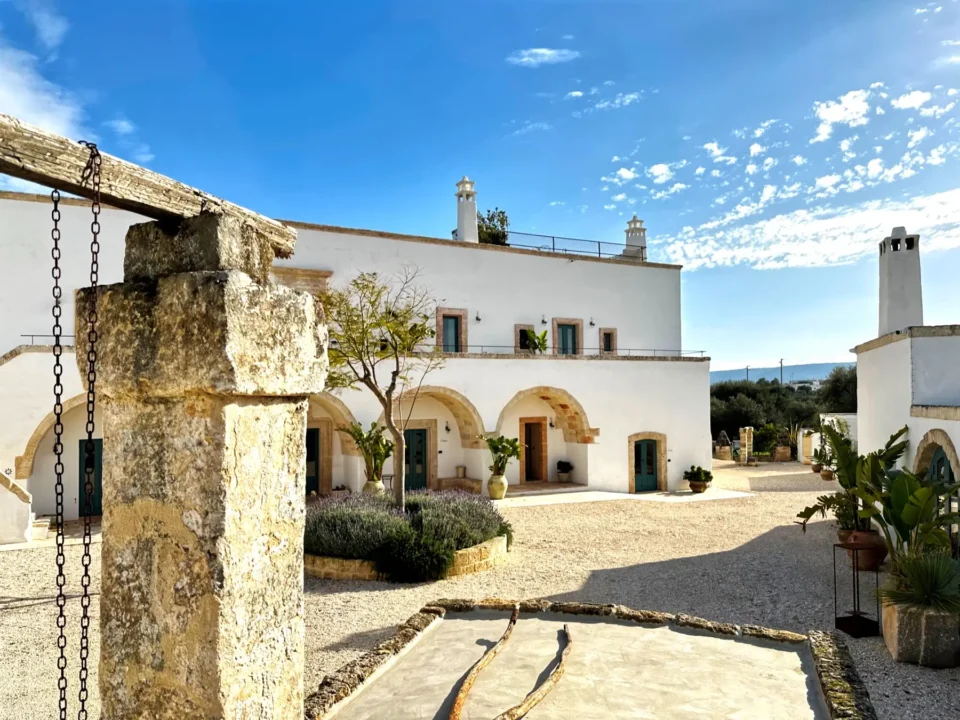
Photo: Stefan Schneider
Architecture and building materials
The whole area is characterised by tuff, which has naturally created the many caves, but which has also provided an excellent building material since ancient times, as it is relatively easy to work. It was therefore typical to quarry the stone blocks for a new building in the immediate vicinity – traces of some quarries can still be seen here in the dried-up riverbed. The tuff is soft and therefore not very stable, which explains the immense thickness of the walls of the old buildings. Wood, on the other hand, was extremely rare, so the early builders had no choice but to use the abundant tuff to construct ceilings and roofs, hence the typical vaulted ceilings. In order to be able to vault larger rooms with the relatively soft material, the so-called star vault was widely used here in southern Puglia – resulting in a beautiful star-shaped ceiling. It gets very, very hot here in the summer and window openings were kept to a minimum. They were often simply closed with wooden shutters. Traditionally, the interior and exterior walls were whitewashed for hygienic reasons, as lime disinfects and protects the rather crumbly tuff. The rural buildings were also painted in different colours depending on the period. During the restoration work, we found different layers of paint on the outside, ranging from deep red to sky blue.
The floor slabs were made of harder stones from the higher areas of the hilly hinterland (chianche); the slabs, some of which were 10 cm thick, were laid directly on the tamped ground to at least partially keep out moisture. Above the vaulted tuff ceilings, the cavities were filled with earth and debris, then covered with thick stone slabs, and the flat roofs were sealed with a mass of lime, sand, clay fragments and sometimes even shell fragments, known as cocciopesto. This waterproof mortar was used by the Romans in the 1st century BC!
Vaulted ceilings and walls in tuff – Bambarone La Masseria in the room Il Salone before and after
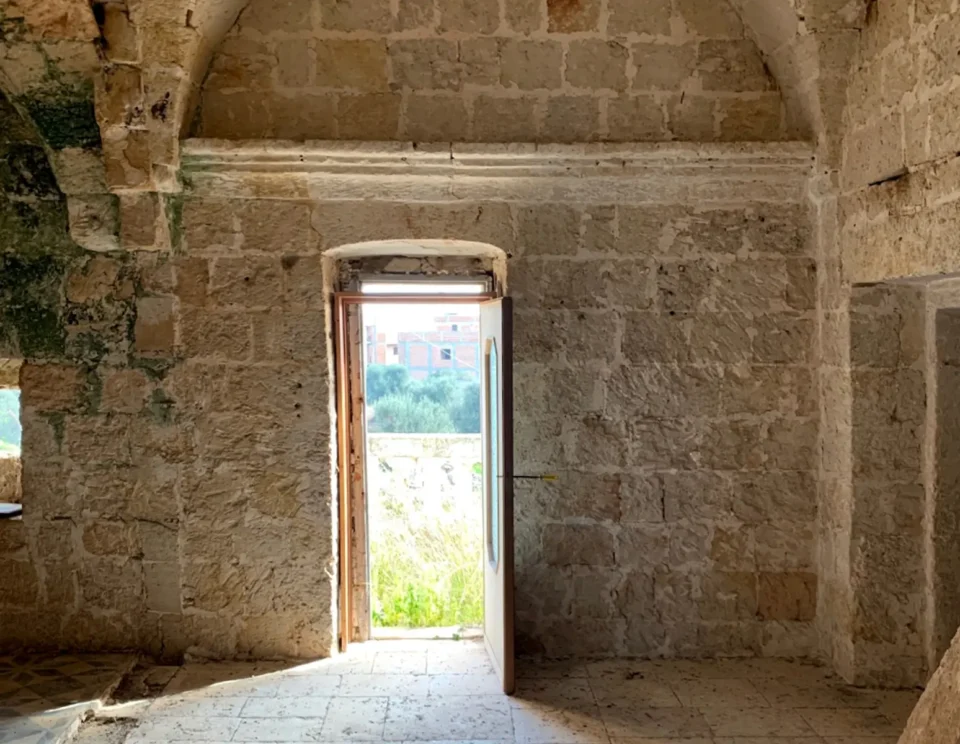
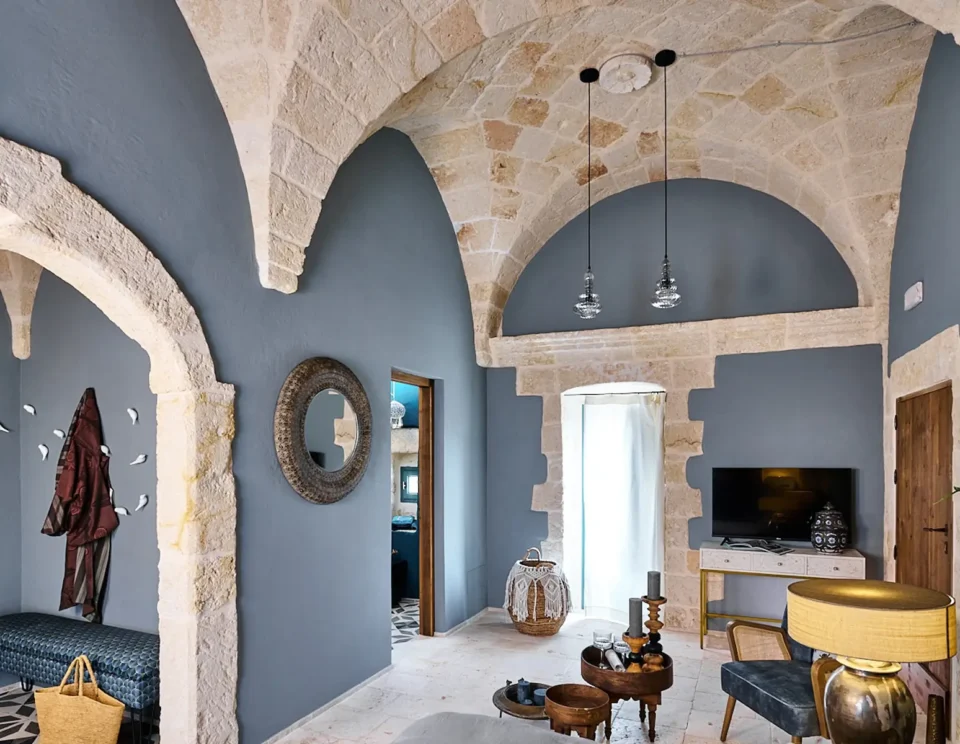
Hard work in the oil mill
After the labour-intensive harvest, the olives had to be processed quickly: the oxidation process, which starts immediately, quickly reduces the quality of the oil. The harvest was usually collected on a platform above the mill (in our case the large terrace) and poured into the underground rooms through small openings in the ceiling. Pitiful donkeys, blindfolded, would spend weeks turning the large millstones in circles to turn the olives into a pulp. In the second stage, the pulp was piled between round woven mats and the oil was pressed out with huge wooden spindles. Basins sunk into the rocky ground collected the oil, which was then stored in amphorae. https://www.terredifasano.it/lasciati-ispirare/i-frantoi-ipogei/
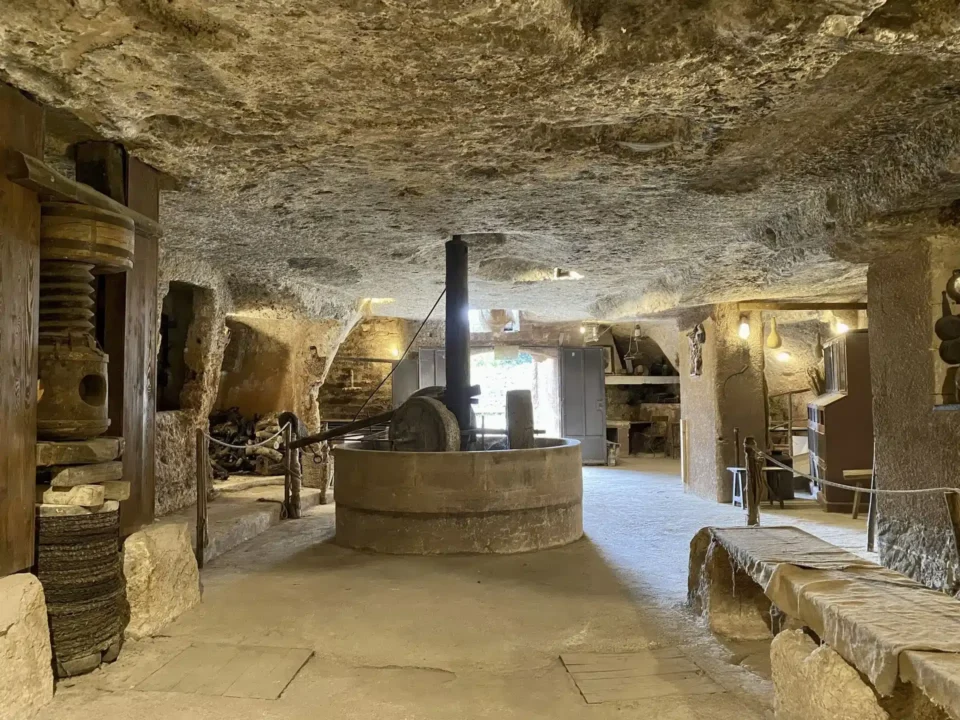
Photo: www.terredifasano.it
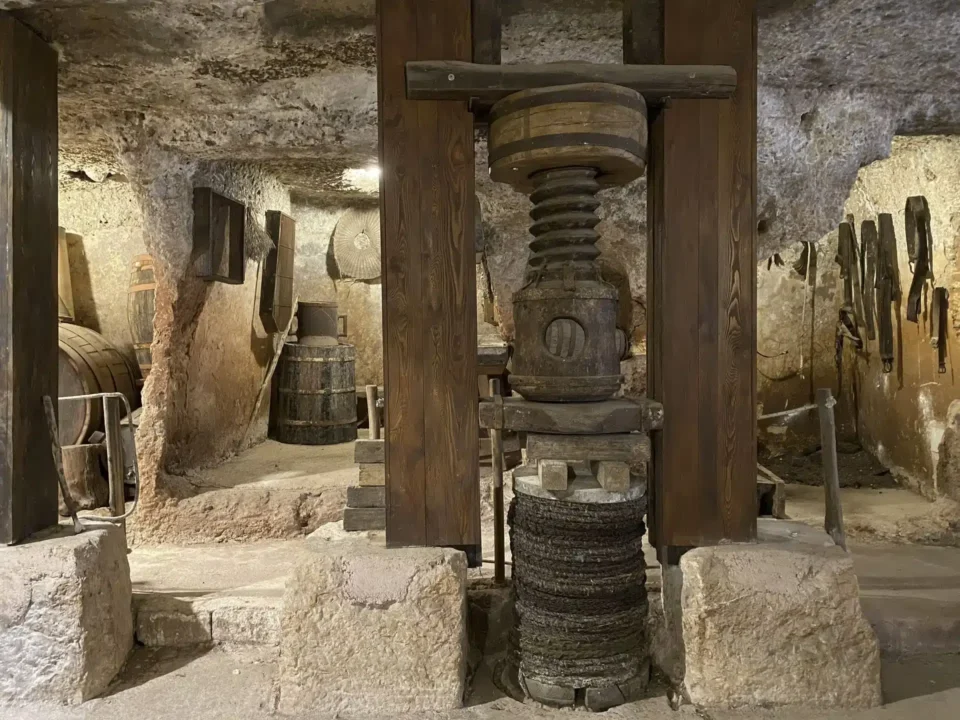
Photo: www.terredifasano.it
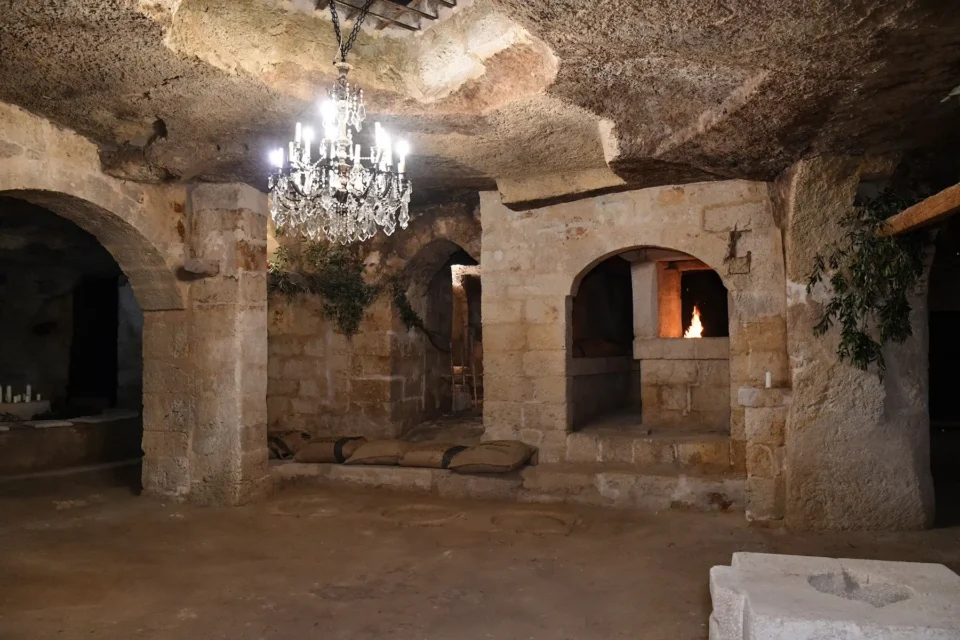
Photo: Stefan Schneider
Harvesting and pressing took many weeks and often the olives of several farmers were processed in one mill. Not only did this mean cruel conditions for the animals, without light or fresh air, but the workers also spent day and night in the underground caves to produce the oil as quickly as possible. You can still see the fireplace and the bed carved out of the rock, which was enough for the workers to live on with a little straw. Incidentally, until the invention of petroleum, oil was not primarily used for food, but for lighting, even in ancient times!
So let’s turn our attention to antiquity: in the next article, we’ll see how this area of Puglia has been inhabited since the Stone Age and how it reached its first splendour in ancient times: “How did people live in the Bambarone La Masseria area in ancient times?”
Book your piece of history now!
Experience the beauty of Puglia in a very special way. Soak up the atmosphere of a historic country estate and let the history, architecture and unique landscape enchant you.
Experience the magic of Bambarone La Masseria! – You can book here